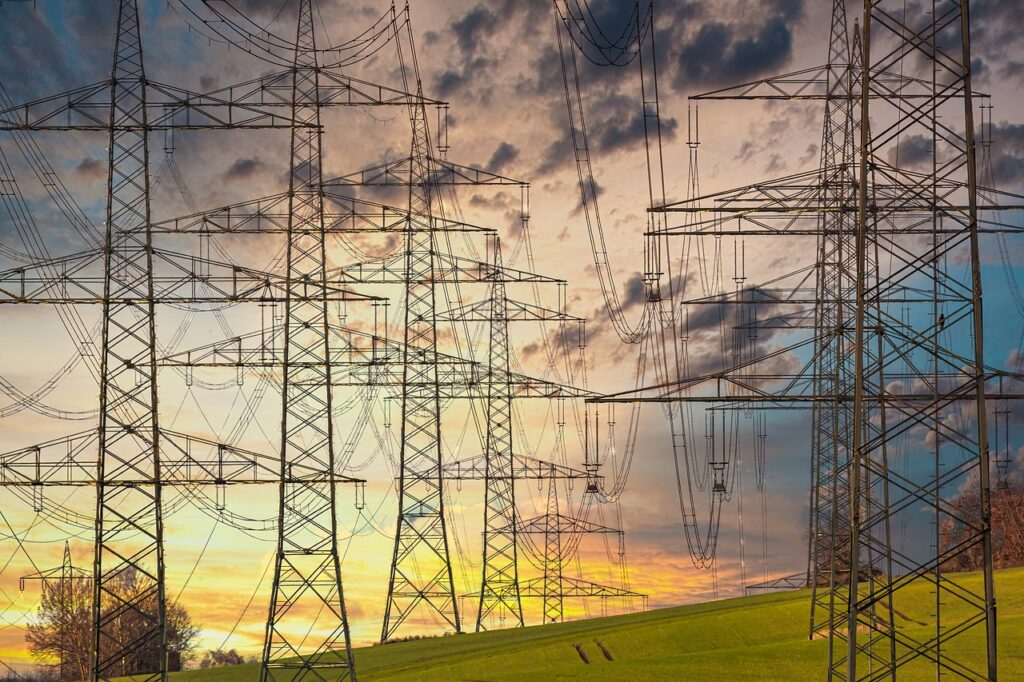4 Energy Change Examples
In the dynamic realm of physics and our everyday experiences, energy changes form constantly, subtly orchestrating the physical world around us. From the light energy illuminating our homes to the kinetic energy propelling vehicles. However, understanding these transformations is not only intriguing but also crucial for appreciating the complex interplay of energies that power our lives. This article delves into 4 energy change examples, highlighting how various forms of energy, such as chemical energy, kinetic energy, and electrical energy, transition and interact within the law of conservation of energy.
4 Energy Change Examples
The Magic of Chemical Energy: Transformations in Everyday Life
Chemical energy is stored within chemical bonds. In fact, it’s a cornerstone of countless processes in our daily lives and the natural world. Also, it’s the silent powerhouse behind everything from the food we consume to the fuels powering our vehicles.
Unleashing Energy through Chemical Reactions
- Example 1: Digestion of Food
- Our bodies are remarkable chemical reactors. Where food’s stored energy is released through metabolic processes, powering our cells and organs. Thus this example of energy transformation underscores the vital role of chemical energy in sustaining life.
- Example 2: Combustion in Engines
- Cars and machinery convert chemical energy from fuel into mechanical energy. So this conversion, a staple in modern transportation, epitomizes how chemical reactions facilitate our movement and industrial activities.
Kinetic Energy at Play: Movement and Energy Transfer
Kinetic energy – the energy of an object in motion – is omnipresent. From the wind rustling leaves to athletes sprinting on a track. Hence, it’s a vivid demonstration of energy in action, offering a tangible glimpse into the physical changes driven by energy transfer.

Everyday Examples of Kinetic Energy
- Example 3: Roller Coasters
- Roller coasters are thrilling embodiments of kinetic and potential energy. Furthermore, as the coaster climbs, gravitational potential energy increases. Therefore, transforming into kinetic energy as it descends. Showcasing the exhilarating interplay of energy forms.
- Example 4: Wind Energy Conversion
- Wind turbines transform kinetic energy from the wind into electrical energy. A sustainable and growing source of power. This example not only illustrates kinetic energy in motion but also underscores our increasing reliance on renewable energy sources.
4 Energy Change Examples Frequently Asked Questions
How does the law of conservation of energy apply to these examples?
The law of conservation of energy states that energy cannot be created or destroyed. Only transformed from one form to another. So this fundamental principle is vividly illustrated in each of the examples discussed:
- Chemical to Mechanical Energy (e.g., in cars): The chemical energy stored in fuel is transformed into mechanical energy. Powering the car’s movement. No energy is lost in this process; it merely changes form.
- Electrical to Light Energy (e.g., light bulbs): When electrical energy flows through a light bulb, it transforms into light and heat energy. Thus the total amount of energy remains constant. Adhering to the conservation law.
- Kinetic to Electrical Energy (e.g., wind turbines): Wind turbines convert the kinetic energy of moving air into electrical energy. Therefore, the initial kinetic energy of the wind is not lost. But transformed into a different energy form.
- Nuclear to Electrical Energy (e.g., nuclear power plants): Nuclear reactions in power plants transform nuclear energy into thermal energy. Which is then converted into electrical energy. The total energy before and after the transformation remains the same.
In each instance, the total energy within the system remains constant, validating the law of conservation of energy.
In what ways can understanding energy transformations benefit our daily lives?
Understanding energy transformations has several practical benefits in daily life:
- Energy Efficiency: Knowledge of how energy transforms helps in designing and using appliances and systems more efficiently, reducing energy waste and saving costs.
- Informed Choices: Awareness of different forms of energy and their transformations enables individuals to make informed decisions about energy use. Such as choosing renewable energy sources or energy-efficient products.
- Educational Value: Learning about energy transformations enhances scientific literacy. Fostering a better understanding of the physical world and encouraging curiosity and innovation.
- Environmental Impact: Understanding energy transformations is crucial for appreciating the environmental impact of different energy sources. Guiding us toward more sustainable practices.
Are there any safety concerns associated with these energy changes?
Yes, there are safety concerns associated with energy transformations, varying based on the type of energy involved:
- Chemical Energy (e.g., fuels): Handling fuels requires caution due to the risk of fire or explosions.
- Electrical Energy: Electrical systems must be properly insulated. And maintained to prevent electric shocks, fires, and other hazards.
- Nuclear Energy: Nuclear energy poses risks of radiation exposure, necessitating stringent safety protocols and disaster preparedness strategies.
- Mechanical and Kinetic Energy (e.g., machinery): Moving parts in machinery can be hazardous. Requiring safety measures like guards and emergency shut-offs.
As a result, in each case, appropriate safety measures, regulations, and education are essential. To mitigate risks associated with energy transformations.
This section has covered two of the four energy change examples. Focusing on the transformations involving chemical and kinetic energies and their manifestations in our daily lives. So, the next sections will explore electrical energy and its applications, along with additional fascinating examples of energy transformations.
4 Energy Change Examples

Illuminating Our World: The Role of Electrical Energy
Electrical energy is a pivotal form of energy in modern society. Powering everything from household appliances to vast industrial machines. Moreover, it represents a versatile and easily distributed type of energy, making it indispensable in daily life and various technological applications.
Electrical Energy in Everyday Appliances
- Example 5: Lighting Our Spaces
- The transformation of electrical energy into light energy in a light bulb is a classic example of energy conversion. This process not only brightens our homes but also demonstrates the practical application of converting electrical energy into a different form of energy.
- Example 6: Operating Kitchen Appliances
- Everyday kitchen devices like microwaves and refrigerators are prime examples of objects utilizing electrical energy. Thus they transform electrical energy into forms of heat and mechanical energy. Essential for food preparation and preservation.
The Wonders of Mechanical and Radiant Energy
Mechanical and radiant energies are two additional forms of energy. they play significant roles in our physical world and technology. Mechanical energy, a combination of kinetic and potential energy, is crucial in movements and physical systems. While radiant energy, like sunlight, is vital for life on Earth.
Subheading: Mechanical Energy in Motion
- Example 7:The Mechanics of a Roller Coaster
- Revisiting The roller coaster, it’s a fantastic representation of mechanical energy. The total amount of energy (both kinetic and potential) in the coaster system is a testament to the conservation of mechanical energy, illustrating this principle thrillingly and tangibly.
Subheading: Harnessing Radiant Energy
- Example 8:Solar Panels and Solar Energy
- Solar panels convert radiant energy from the sun into electrical energy. A process critical for sustainable energy solutions. This transformation showcases how energy from the sun can be harnessed and utilized. Emphasizing the importance of renewable energy sources in combating climate change.
Conclusion
The exploration of these 4 energy change examples – from the chemical reactions fueling our bodies to the radiant energy powering solar panels – offers a profound insight into the diverse and dynamic nature of energy transformations. Understanding these examples not only deepens our appreciation of the physical world but also underscores the importance of efficient and sustainable energy use in our daily lives and for future generations.

FAQs on Energy Transformations and Thermodynamics
How do energy transformations align with the laws of thermodynamics?
The laws of thermodynamics govern energy transformations. Which provides a fundamental framework for understanding how energy moves and changes in a system:
- First Law of Thermodynamics (Conservation of Energy): This law states that energy cannot be created or destroyed. Only transformed or transferred. All energy transformations discussed, from chemical to kinetic or electrical to light energy, adhere to this principle, ensuring that the total energy in a closed system remains constant.
- Second Law of Thermodynamics (Entropy): This law states that in any energy transfer or transformation. Some energy is lost in the form of heat, increasing the system’s entropy (or disorder). For example, when electrical energy is converted to mechanical energy in an electric motor, some energy is inevitably lost as heat. Making the process less than 100% efficient.
What role does energy efficiency play in the context of these energy changes?
Energy efficiency is crucial in the context of energy transformations for several reasons:
- Minimizing Energy Loss: Efficient systems and technologies are designed to minimize the loss of energy (as per the second law of thermodynamics) during transformations. For instance, LED bulbs are more energy-efficient than traditional incandescent bulbs. As they convert a higher proportion of electrical energy into light, with less wasted heat.
- Reducing Environmental Impact: By using energy more efficiently, we can reduce the amount of energy needed for various tasks. Which in turn can decrease the environmental impact, particularly in terms of greenhouse gas emissions from fossil fuels.
- Cost-Effectiveness: Energy-efficient appliances and systems can significantly reduce energy bills over time, making them cost-effective solutions for consumers and businesses.
Can we harness these energy transformations for more sustainable living?
Yes, harnessing energy transformations can significantly contribute to more sustainable living:
- Renewable Energy Sources: By transforming energy from renewable sources like the sun, wind, and water into electrical energy, we can reduce dependence on fossil fuels. Which are finite and have a larger environmental footprint.
- Smart Technology and Grids: Advances in technology allow for more efficient energy use and distribution. Smart grids, for instance, optimize the delivery of electricity and integrate various renewable sources, enhancing sustainability.
- Sustainable Transportation: The transformation of electrical energy into mechanical energy in electric vehicles represents a shift towards more sustainable transportation. Reducing carbon emissions and pollution.
- Building Design and Management: Sustainable building designs that optimize energy use, such as through passive solar heating or energy-efficient appliances, contribute to reducing the overall energy footprint of living spaces.
In summary, effectively harnessing and managing energy transformations is key to advancing sustainable living. Reducing environmental impact, and promoting a more balanced interaction with our planet’s resources.
Final Thoughts
Energy, in its numerous forms, is the linchpin of the universe, driving everything from the smallest cellular processes to the largest cosmic phenomena. The examples discussed here – chemical, kinetic, electrical, mechanical, and radiant energies – are mere glimpses into the vast and intricate tapestry of energy transformations that underpin our existence and the universe at large. By understanding and respecting these energy changes, we can better appreciate the complexity of our world and work towards a more sustainable and energy-efficient future.
4 Energy Change Examples

Exploring the Depth of Energy Transformations: Heat and Sound Energy
Chiefly, heat and sound energies are two more examples that illustrate the diversity of energy forms and their transformations in our environment. Without doubt, understanding these types of energy is essential for grasping the broader concept of energy change and its practical implications.
The Intricacies of Heat Energy: From Chemical to Thermal
Heat energy, or thermal energy, is often generated through the conversion of other energy forms. Like chemical or electrical energy. This type of energy is fundamental in both natural processes and human-made systems.
Thermal Energy in Everyday Life
- Example 9: Cooking and Heating Systems
- Firstly, the conversion of chemical energy in natural gas into heat energy in stoves and thermal power stations is a practical example of this transformation. Thus this process is central to cooking and heating. Demonstrating how chemical energy is transformed into a usable form of heat.
- Example 10: Exothermic and Endothermic Reactions
- In chemical reactions, the release or absorption of energy often occurs as heat. Exothermic reactions, like combustion, release heat energy, while endothermic reactions, like the dissolution of certain salts in water, absorb heat, showcasing the intricate relationship between chemical reactions and heat energy.
4 Energy Change Examples

The Dynamics of Sound Energy
Sound energy is a form of energy associated with the vibration of matter. It is a mechanical wave that requires a medium, like air or water, to travel. Understanding sound energy is crucial for appreciating its role in communication, technology, and the natural world.
Examples of Sound Energy in Action
- Example 11: Musical Instruments
- When a guitar string vibrates, it converts mechanical energy into sound energy. Thus, this transformation is a clear demonstration of how energy can change from a physical form (mechanical) into an audible form (sound), enriching our lives through music and communication.
- Example 12: Echolocation in Animals
- Did you know some animals, like bats and dolphins, use sound energy for navigation and hunting through echolocation. Therefore this natural phenomenon exemplifies the practical use of sound energy in the animal kingdom, highlighting its significance beyond human applications.
The Role of Energy in the Physical World and Technology
Energy, in its various forms, is not just a theoretical concept but a practical one that has real-world applications and implications. So, from powering our homes to driving technological innovations, the role of energy is omnipresent and multifaceted.
Energy in Technology and Innovation
The application of different forms of energy in technology has revolutionized our world. Indeed, from harnessing wind energy to the development of electric vehicles, the potential for energy conversion is limitless.
Technology Powered by Energy Transformations
- Example 13: Renewable Energy Technologies
- Devices like wind turbines and solar panels exemplify how kinetic and radiant energies can be converted into electrical energy, driving the move toward sustainable and renewable energy sources.
- Example 14: Electric Vehicles (EVs)
- EVs represent a significant shift in how we use energy, converting electrical energy stored in batteries into mechanical energy for transportation. This transformation is pivotal in reducing reliance on fossil fuels and minimizing environmental impact.

FAQs on Energy Transformations in Technology and Future Advancements
What are some innovative ways energy transformations are being used in technology today?
Innovative applications of energy transformations in technology today include:
- Renewable Energy Technologies: Technologies like solar panels and wind turbines efficiently convert radiant and kinetic energies into electrical energy, supporting the shift towards renewable energy sources.
- Energy Storage Solutions: Advanced battery technologies, such as lithium-ion and solid-state batteries, enable more efficient storage of electrical energy, crucial for electric vehicles and renewable energy systems.
- Smart Grids: Smart grid technology uses digital communication to control and optimize the production, distribution, and consumption of electrical energy, enhancing efficiency and integrating various renewable sources.
- Energy Harvesting Devices: These devices capture small amounts of energy from the environment (like kinetic energy from motion or thermal energy from body heat) and convert it into electrical energy, useful in powering small electronics and sensors.
- Thermoelectric Generators: These devices convert heat energy directly into electrical energy using the Seebeck effect, useful in waste heat recovery systems to improve energy efficiency.
How do energy transformations impact our understanding of the natural world?
Energy transformations are fundamental to understanding numerous natural phenomena:
- Ecosystem Dynamics: Photosynthesis, a process that converts solar energy into chemical energy in plants, is fundamental to the energy flow in ecosystems.
- Weather and Climate Systems: The transformation of solar energy affects weather patterns and climate. For example, the uneven heating of the Earth’s surface leads to wind (kinetic energy), which plays a critical role in weather systems.
- Geological Processes: The Earth’s internal heat (a form of thermal energy) drives geological processes like plate tectonics and volcanic activity, shaping the Earth’s landscape.
- Astrophysical Phenomena: Understanding energy transformations in stars, including nuclear fusion, helps explain the life cycle of stars and the dynamics of galaxies.
What future advancements can we expect in the field of energy?
The future of energy is likely to see several exciting advancements:
- Fusion Energy: Research into harnessing nuclear fusion, the process powering the sun, promises a potentially limitless and clean energy source.
- Advanced Renewable Energy Technologies: Innovations in solar and wind energy technologies, including more efficient solar cells and wind turbines, will likely enhance the viability and capacity of renewable energy sources.
- Smart and Efficient Cities: The integration of energy-efficient technologies in urban planning and infrastructure, leading to smart cities that optimize energy use and reduce carbon footprints.
- Artificial Photosynthesis: Scientists are working on mimicking the process of photosynthesis, which could lead to new ways of producing renewable energy and even synthetic fuels.
- Quantum Dot Solar Cells: These are a type of solar cell that uses quantum dots to increase efficiency. Potentially revolutionizing how solar panels are made and used.
- Energy Internet: The concept of an “Energy Internet” where energy users are interconnected in a smart network, allowing for more efficient and dynamic energy distribution and usage.
These advancements reflect a trend towards more sustainable, efficient, and innovative use of energy, driven by the ongoing exploration and understanding of energy transformations.
So, this section has expanded on the various energy change examples. As a result exploring heat and sound energy, and the role of energy in technology and innovation. Thus the next section will continue to delve into the intricate world of energy transformations, emphasizing their significance in our everyday lives and future developments.
The Spectrum of Energy Transformations: Nuclear and Gravitational Potential Energy

Diving deeper into the realm of energy transformations. Nuclear and gravitational potential energies emerge as critical forces shaping both the micro and macro aspects of our universe. As a result, their roles are pivotal in a range of phenomena. From the functioning of stars to the mechanics of planetary systems.
Harnessing the Power of the Atom: Nuclear Energy
Nuclear energy, derived from the nucleus of atoms, represents one of the most potent forms of energy. It is released either through fusion, as in the sun, or fission, as in nuclear reactors.
Practical Applications of Nuclear Energy
- Example 15: Nuclear Power Plants
- Nuclear power plants are a testament to the conversion of nuclear energy into electrical energy. Through controlled nuclear reactions, these plants produce a significant amount of the world’s electricity. Thus, showcasing the practical use of nuclear transformations in providing sustainable, low-carbon energy.
- Example 16: Medical Applications
- Moreover, nuclear energy is not just limited to power generation. In medicine, radioactive isotopes are used in diagnostic imaging and cancer treatment. Indeed demonstrating the versatility and critical importance of nuclear energy in healthcare.
The Invisible Force: Gravitational Potential Energy
Gravitational potential energy is the energy possessed by an object. Due to its position in a gravitational field. Moreover, it is fundamental to the understanding of celestial mechanics and various terrestrial phenomena.
Gravitational Energy in the Universe and on Earth
- Example 17: Orbits of Planets and Satellites
- The orbits of planets around the sun, and satellites around Earth, are classic examples of the interplay between kinetic and gravitational potential energies. These celestial bodies maintain their orbits due to the balance between these two forms of energy, illustrating a fundamental principle of astrophysics.
- Example 18: Water Reservoirs and Hydropower
- On Earth, gravitational potential energy is harnessed in hydropower systems. Water stored in reservoirs possesses gravitational potential energy. Which is converted into kinetic and then electrical energy as it flows downhill, powering turbines. This example highlights how gravitational energy can be transformed and utilized for sustainable energy production.
Energy Transformations: Shaping the Future
As we delve into the myriad ways energy changes form, it becomes evident that these transformations are not just scientific concepts but are integral to advancing human civilization and preserving our planet. From the smallest particles to the vastness of space, energy transformations are the driving force behind innovation, sustainability, and our understanding of the universe.
The Future of Energy Transformations
The future of energy is inexorably linked to our ability to understand and harness these transformations more efficiently and sustainably. Innovations in energy technology promise to reshape how we live, work, and interact with our environment.
Innovations and Sustainable Energy Solutions
- Example 19: Advancements in Energy Storage
- Emerging technologies in energy storage, such as advanced batteries and supercapacitors, are critical for maximizing the potential of renewable energy sources. These innovations enable more efficient storage and use of energy, facilitating a transition to a more sustainable energy grid.
- Example 20: Smart Grids and Energy Management
- The development of smart grids represents a significant leap in managing and distributing energy. By integrating various forms of energy, optimizing their use, and enhancing energy efficiency, smart grids are set to revolutionize how energy is consumed and conserved.

FAQs on Challenges and Contributions in Energy Transformation and Conservation
What challenges do we face in energy transformation and conservation?
The challenges in energy transformation and conservation are multifaceted:
- Efficiency Losses: Due to the second law of thermodynamics, energy transformations often involve efficiency losses, typically in the form of heat energy. Minimizing these losses remains a significant challenge.
- Dependency on Fossil Fuels: The global economy is still heavily reliant on fossil fuels. Transitioning to renewable energy sources requires overcoming economic, political, and infrastructural hurdles.
- Storage and Distribution of Renewable Energy: Efficiently storing and distributing energy from intermittent sources like solar and wind power is challenging, necessitating advancements in battery technology and grid infrastructure.
- Scalability of Clean Energy Solutions: Scaling up renewable energy solutions to meet global energy demands, while maintaining reliability and affordability, is a complex challenge.
- Environmental Impact: Energy production and consumption have significant environmental impacts, including pollution and habitat disruption. Mitigating these impacts while meeting energy needs is a key challenge.
- Technological Advancements: Continuous research and development are needed to improve existing energy technologies. And also innovate new solutions.
How can individuals contribute to more efficient energy use?
Individuals can contribute in several ways:
- Energy-Efficient Appliances: Using energy-efficient appliances and lighting can significantly reduce energy consumption at home.
- Reducing Waste: Turning off lights and electronics when not in use. Using programmable thermostats, and insulating homes effectively can minimize energy waste.
- Supporting Renewable Energy: Choosing renewable energy sources for electricity, Such as solar or wind energy, can reduce dependence on fossil fuels.
- Sustainable Transportation: Opting for public transportation, carpooling, biking, or electric vehicles can reduce energy consumption associated with transportation.
- Advocacy and Education: Advocating for energy conservation policies and educating oneself and others about sustainable practices helps foster a culture of energy efficiency.
- Mindful Consumption: Being conscious of one’s energy consumption and opting for products and services from companies that prioritize sustainability can have a collective impact.
What are some cutting-edge research areas in energy science?
Current cutting-edge research areas in energy science include:
- Advanced Solar Technologies: Research is focusing on perovskite solar cells and quantum dot solar cells. Aiming to create more efficient, flexible, and less expensive solar panels.
- Energy Storage: Developing more efficient and higher-capacity battery technologies. Such as solid-state batteries and flow batteries, is a key research area.
- Smart Grid Technology: Innovations in smart grid technology aim to enhance the efficiency of electricity distribution. And integrate renewable energy sources more effectively.
- Carbon Capture and Storage: Research in capturing and storing carbon dioxide emissions from energy production is critical for mitigating climate change.
- Hydrogen Energy: Developing efficient and economically viable methods for hydrogen production, storage, and use is a promising area. Particularly for transportation and industrial processes.
- Nuclear Fusion: Fusion energy research seeks to replicate the sun’s energy production method on Earth, offering a potentially limitless and clean energy source.
- Bioenergy and Biofuels: Innovations in bioenergy, including the development of sustainable biofuels and biogas from organic waste, are ongoing.
These research areas are crucial for addressing current energy challenges. And paving the way for a more sustainable and efficient energy future.
This section has further explored the complex and fascinating world of energy transformations. That is, touching upon nuclear and gravitational potential energies, and looking ahead at the future of energy. Therefore, the final section will summarize the key points and offer concluding remarks on the significance of these transformations.
Energy Transformations: The Heartbeat of Progress and Sustainability

So, in this final segment, we reflect on the profound impact and significance of energy transformations in shaping our world. From the smallest atomic interactions to the grand scale of cosmic phenomena, energy changes form in countless ways. Driving progress and offering solutions for a sustainable future.
Integrating Energy Transformations into Sustainable Development
Chiefly, the integration of energy transformations into sustainable development is crucial for addressing environmental challenges and ensuring a prosperous future. Hence, the way we harness, convert, and utilize energy has far-reaching implications. Primarily, for the health of our planet and the well-being of future generations.
Sustainable Practices and Renewable Energy
- Example 21: Green Building Design
- Innovative building designs that incorporate energy-efficient technologies and renewable energy sources exemplify how energy transformations can be aligned with sustainable development. Furthermore, these buildings use less energy, reduce carbon footprints, and showcase the practical application of our understanding of energy in creating sustainable living spaces.
- Example 22: Agricultural Innovations
- In agriculture, the use of solar-powered irrigation systems and biomass for energy are examples of how energy transformations can enhance sustainability. These practices not only improve efficiency but also help in reducing reliance on non-renewable energy sources. Demonstrating the role of energy transformations in sustainable agriculture.
Energy Transformations: Bridging Science and Society
Undoubtedly the study and application of energy transformations bridge the gap between science and society. For example, offering tangible benefits and improving the quality of life. From healthcare to transportation, the practical applications of energy changes are ubiquitous and indispensable.
The Impact on Daily Life and Global Challenges
- Example 23: Healthcare Advancements
- In healthcare, the use of electromagnetic radiation in diagnostic imaging and treatments is a direct application of energy transformations. Thus, improving diagnostic accuracy and treatment outcomes. Furthermore, these advancements underscore the vital role of energy changes in medical science and patient care.
- Example 24: Transportation Innovations
- The development of hybrid and electric vehicles, which efficiently convert electrical energy into mechanical energy, is revolutionizing the transportation sector. This shift not only reduces environmental impact. But also showcases how energy transformations are integral to addressing global challenges like climate change.
4 Energy Change Examples Conclusion: Embracing the Power of Energy Transformations

Finally, as we conclude this exploration of 4 energy change examples and more, it becomes evident that understanding and harnessing energy transformations is key to advancing human knowledge. And addressing the challenges of our times. The examples discussed – from chemical reactions in our bodies to the grand scale of solar energy – highlight the ubiquitous and transformative nature of energy in our universe.
In fact energy transformations are not just scientific phenomena; they are the underpinnings of innovation, sustainability, and progress. Therefore, as we continue to explore and understand these transformations, we unlock the potential to create a more sustainable, efficient, and technologically advanced society. Also, the future of energy is a mosaic of endless possibilities. Indeed, where each transformation brings us closer to understanding the intricacies of the universe and improving the human condition.
4 Energy Change Examples: Final Thoughts and Call to Action
In the face of global challenges like climate change and energy scarcity, it is more important than ever to embrace the principles of energy transformation and sustainability. Therefore each of us has a role to play in this journey. Of course from making informed choices about energy use to supporting policies and technologies that promote sustainable energy solutions.
Finally, as we move forward, let us carry the knowledge and appreciation of energy transformations as a beacon. Guiding us toward a brighter, more sustainable future for all.
Recent Posts
The Future of Wind Energy The future of wind energy is set to play a critical role in addressing global energy needs while combating climate change. As renewable energy sources like wind and...
Misconceptions about Wind Energy This article Misconceptions about wind energy will debunk common myths surrounding wind energy and clarify the facts based on scientific research, studies, and...


